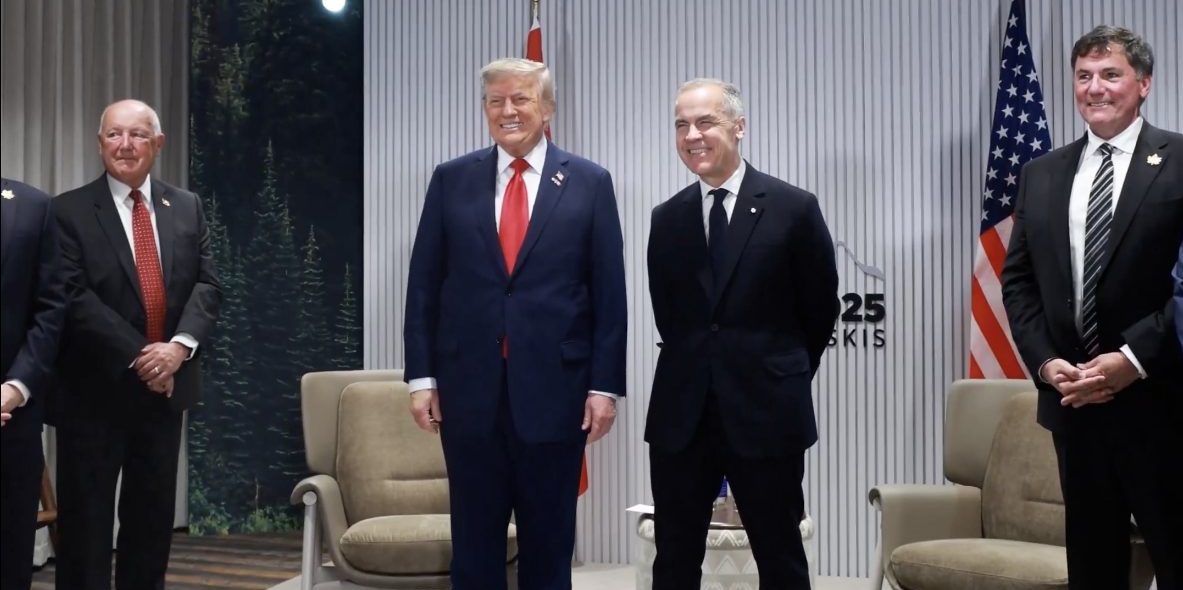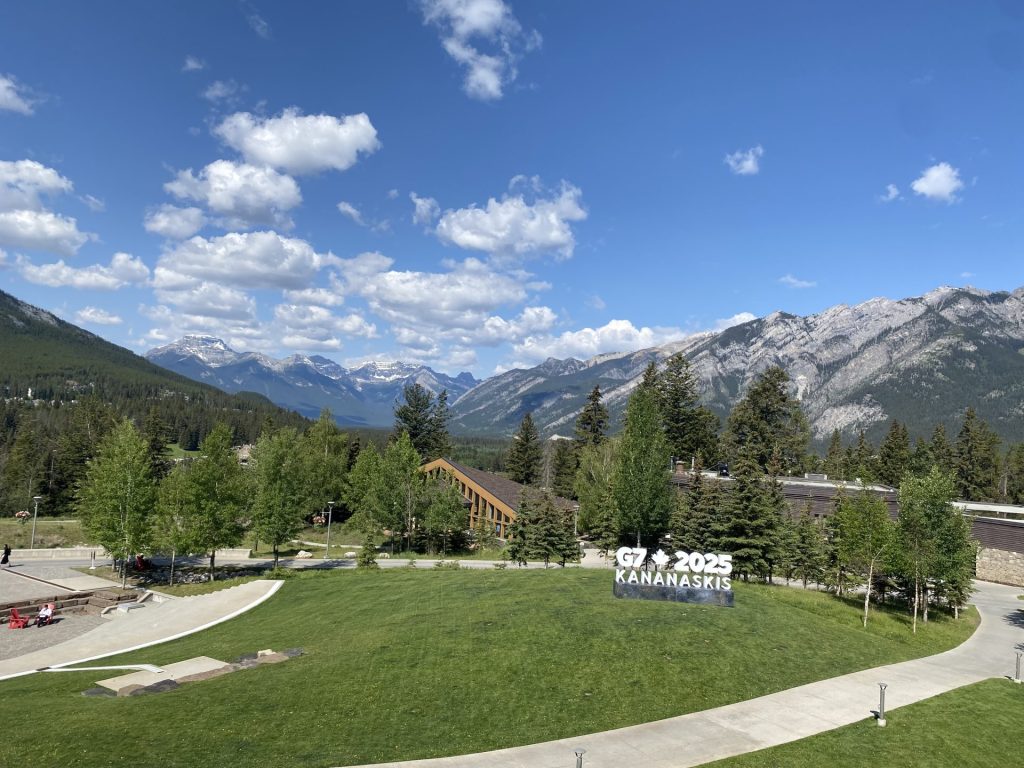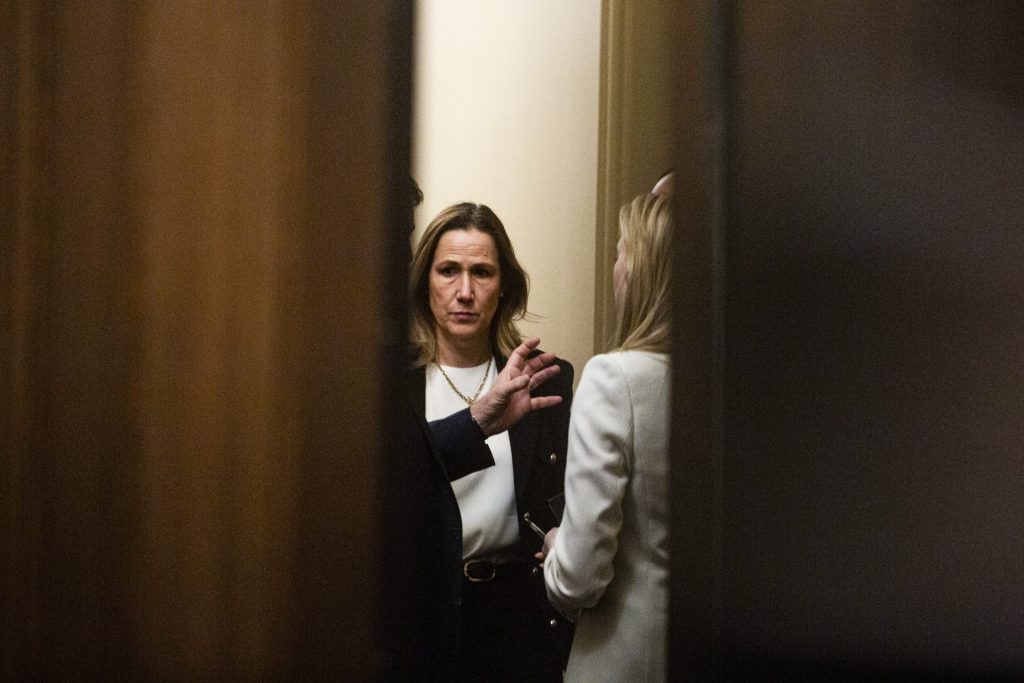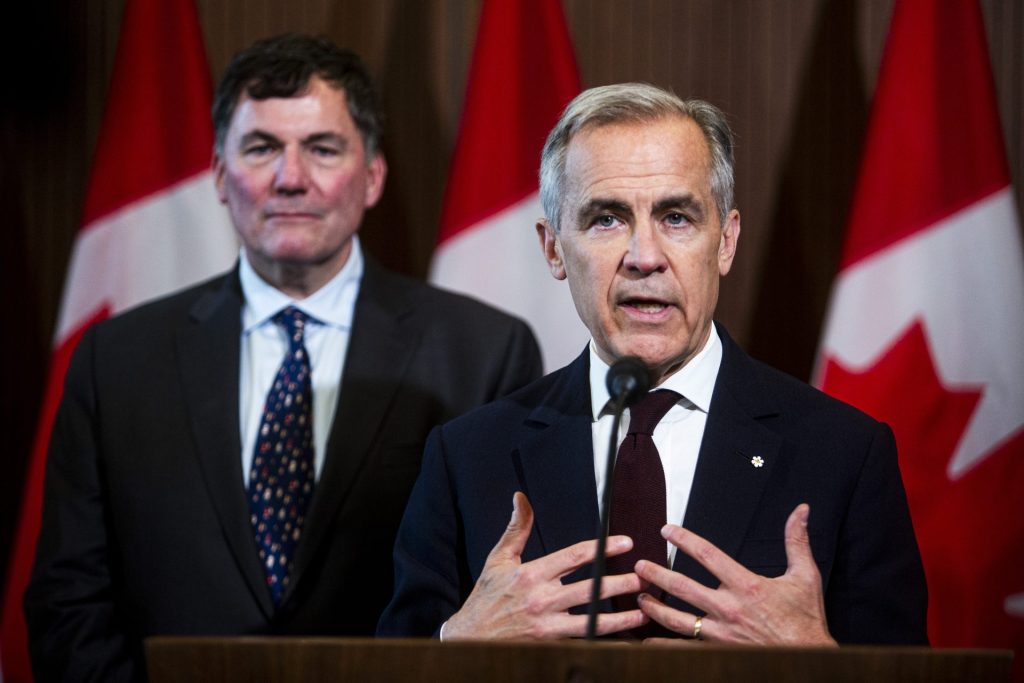‘I’m a tariff person’: Trump doubles down on levies as new deal pledged within 30 days

BANFF, ALTA.—With a target to conclude talks on a trade agreement within 30 days, United States President Donald Trump reiterated his preference for tariffs as the G7 summit officially kicked off on June 16.
Canada—and the rest of the world—has been subject to a slew of American tariff threats, pauses, evocations, and exemptions that have created an air of capriciousness over the economy.
“I’m a tariff person. I’ve always been a tariff [person],” Trump told reporters prior to a bilateral meeting with Prime Minister Mark Carney (Nepean, Ont.) on June 16.
“It’s simple. It’s easy. It’s precise. And it just goes very quickly,” he said.
The meeting was the first bilateral discussion Carney had in Kananaskis, Alta., as part of the G7 leaders’ summit in the Rocky Mountain resort town. The majority of international press covering the summit are doing so more than 80 kilometres away in Banff, with only a select few allowed in the summit site.
The leaders have set a target to complete an economic and security partnership within 30 days, according to the PMO readout of the meeting.

Trump said that Carney has a “more complex idea” than tariffs, which he remarked is “also very good.”
“We’re going to look at both. We’re going to come out with something,” he said.
Carney has revealed little of what he hopes will be contained in a proposed economic and security partnership with the U.S.
When asked earlier if the deal was within reach in the coming days, weeks, or months, Trump told reporters that it is.
“It’s achievable,” he said. “Both parties have to agree.”
According to White House press secretary Karoline Leavitt, Trump is scheduled to leave Alberta Monday night following the leaders’ dinner “because of what’s going on in the Middle East.”
The first day of the G7 summit also included a multilateral session on the global economic outlook, as well as bilateral meetings between Carney and Japanese Prime Minister Shigeru Ishiba, European Commission President Ursula von der Leyen, and European Council President António Costa.
Tariffs should be removed: Hillman
In his meeting with Trump, Carney was joined by Canada-U.S. Trade Minister Dominic LeBlanc (Beauséjour, N.B.), but not Foreign Affairs Minister Anita Anand (Oakville East, Ont.).
The U.S. delegation included Secretary of State Marco Rubio, Treasury Secretary Scott Bessent, and U.S. Trade Representative Jamieson Greer, according to a pool report.
LeBlanc said that Canada is “confident” progress has been made.
He told reporters during a scrum in Kananaskis that after the meeting, he and Canadian Ambassador to the U.S. Kirsten Hillman met with Greer and other American officials. He added that the two sides agreed to another meeting later in the week.

Hillman said Canada’s objective is to eliminate tariffs.
“Our position is that we should have no tariffs on Canadian exports to the United States—that is our position,” she said. “We will continue to talk until we find the deal that is the best deal to achieve for Canada.”
“We have had a lot—especially recently—of productive conversations where we are understanding each other better. We feel they’re understanding us better,” she said, remarking that was the case on the first day of the summit with the two meetings. “But we’re not there yet.”
Hillman said there has been an “acceleration in the discussions in the last couple of weeks.”
Neither LeBlanc nor Hillman would comment on whether Trump reiterated his frequent threat to absorb Canada as a “51st state.”
The scrum wasn’t broadcast at the Banff media centre.
CUSMA not a target of U.S. trade action: Chamber
The Canadian Chamber of Commerce’s Matthew Holmes, executive vice-president, international, and chief of public policy, said there was no expectation for there to be a trade deal finalized before the leaders head home.
“Our expectation is that they’re not going to come out of this meeting with a wet-inked deal and here’s the new order—that’s just not my expectation,” Holmes told The Hill Times during an interview at the Banff media centre.
He said that he is “optimistic” that there will be a “next step” taken, referencing the announcement of a framework on trade between the U.S. and the United Kingdom shortly after a phone call between Trump and U.K. Prime Minister Keir Starmer.
That framework was signed in Kananaskis and celebrated as a completed trade deal by Trump and Starmer. The British prime minister told reporters that the deal was the implementation of the previously announced agreement, which dealt with lowering tariffs on steel and autos. The two leaders didn’t offer details of what was included in the signed agreement.
Holmes said that while Trump doubled down on tariffs, he left possibilities open.
“He spoke with some openness to what Prime Minister Carney has positioned in front of him,” he said. “That’s a really healthy signal that the talks are continuing.”
He said that there are “promising” signs for Canada-U.S. trade emerging, citing a recent delegation visit by the Chamber of Commerce to Washington, D.C.

He said Congressional officials signalled that the Canada-U.S.-Mexico Agreement (CUSMA) is not a target of American trade action.
“Nobody is being asked to make that problematic or walk away from that agreement,” he said.
CUSMA is up for review in 2026, which gives the parties the ability to indicate their desire to leave the pact within 10 years.
Holmes said linked to the negotiations is a deeper concern over adhering to agreements being made.
“You rip up our trade agreement once, shame on you. You rip it up twice, shame on me,” he said. “A third renewed agreement is only so strong, and is only so good as the parties’ willingness to abide by it.”
He said the trust that has been broken will take some time to heal.
“In the meantime, there will be that threat that this can happen again,” Holmes said. “We need to diversify our risk. We need to diversify our trading partners.”
That diversification can happen at the same time as Canada still takes advantage of its access to the U.S. market, he said.
The case for a slow approach
Carlo Dade, director of international policy at the University of Calgary’s School of Public Policy, said Canada isn’t as desperate as other countries given the global tariffs being applied.
He said that one pathway to remove the American tariffs is to allow the U.S. judicial process to carry out.
Federal courts have ruled against Trump’s imposition of International Emergency Economic Powers Act (IEEPA) tariffs, which include those on Canada under the guise of dealing with fentanyl and border issues. Those cases are currently being appealed.
Dade said that Canada shouldn’t be finalizing a deal until it has clarity on IEEPA tariffs as Canada would no longer have to be in the position of hoping that the Trump administration honoured trade commitments by not enacting tariffs.
“That’s more important than rushing into an agreement now,” he said. “You could get an agreement that [becomes] meaningless.”
He said that with whatever agreement Canada negotiates to remove tariffs with the U.S., there is a question of whether the agreement will last.
“We may make concessions to prevent this round of tariffs, only to have Trump change his mind the next week or next month,” he said, remarking a court decision that reins in IEEPA powers would provide sufficient assurances to offer concessions.
nmoss@hilltimes.com
The Hill Times






 LICENSING
LICENSING PODCAST
PODCAST ALERTS
ALERTS













